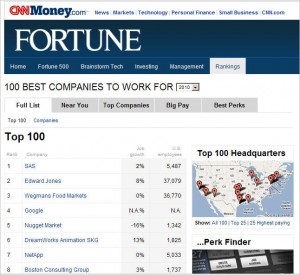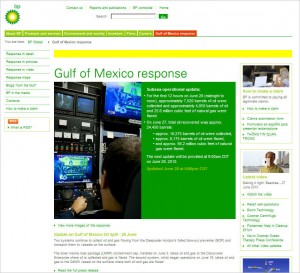I had so much fun doing the end-of-year posts that I want to repeat the experience regularly. So the Monthly Wrap will (a) cover short things that didn’t fit elsewhere, and (b) update things that did. Here’s the debut:
An update on “the Twitter experiment.” A couple of months ago, in the post HR Superstars: A Handy Guide, I promised to follow everyone on the iCMS list of “21 HR Leaders in Web 2.0 You Must Follow” and report on the experiment. I duly created a Twitter account and set up a TwitterDeck column to show every superstar tweet. However, after a couple of days I decided that only 16 of them offered enough substantive content (as opposed to personality chat) to be relevant, so I trimmed a bit. I did not tweet from this account at all for the first six weeks, but it was found by a few other tweeters, and I’ve followed back those that seem to offer interesting content.
The interim findings: Quality and quantity are not mutually exclusive, but they often do not go together. A couple of frequent tweeters are consistently interesting, a couple are not. On the other hand, tweeting infrequently does not necessarily lead to better tweets! And on the third hand—I realize even more than ever that everyone’s personal filter is set to a different version of what’s meaningful/interesting/useful. So I’m still working on how to draw general conclusions from the HR/Recruiting Twitter stream. Next step in the experiment is to go beyond the original list and see who else is rippling this particular pool.
Unintended Messaging strikes again. I’m expecting this to be a monthly feature! In January, the most striking example I encountered was on the website of a mid-sized professional services company. I think the page was labeled “Executive Leadership” but it could have been some close variant of same. Photographs of the leadership folks were arranged in three columns and (let’s say) eight rows. On the bottom row were three women. You guessed it—the only three women. Title-wise, they were indeed at the lowest level of the leadership hierarchy, which was arranged from President/CEO/Etc. down to Director of Marketing/HR/Whatever.
How to avoid this unfortunate image, in which women appear to be crushed under a heavy stack of men? My first thought is alphabetical arrangement. Second would be some type of grouping that would allow the women to be scattered in among the men. For example, put the top four guys in a C-level group, then break up the others into functional groups such as operational, people, or whatever would work. I’ll bet there’s a way . . .
What are they thinking at Kashi? It’s nothing to do with Careers directly—but a gaffe in corporate communications will eventually rub off on the employer brand. Short version: Those of us longing for Kashi waffles, and finding none at the store for several weeks, went to the Kashi website for insight. Buried on a deep page was a small note saying: “We are experiencing delays in production due to repairs and equipment upgrades at our waffle facility. We expect to be fully stocked in early 2011 . . .”
Yes, you read that right: 2011. And insult is added to injury by another post from the company describing this year+ gap as a “temporary shortage.”
A year’s lapse in the availability of a popular product line is really huge from a business perspective. But even more problematic is letting people wonder for weeks (and maybe forever) about the missing waffles, because the automatic assumption when a product line disappears is either “unpopular product” or “troubled company.” A little more research discovered no signs of clarification via press release or Facebook page. (In case you think I shouldn’t be scolding a small-but-earnest natural foods company—let us not forget that super-giant Kellogg bought Kashi in 2000. And Kellogg can’t help out with these waffle woes???)
That’s it for January. Another Monthly Wrap feature: The illustration is just for visual enjoyment. See more ice wonders at EnglishRussia.





